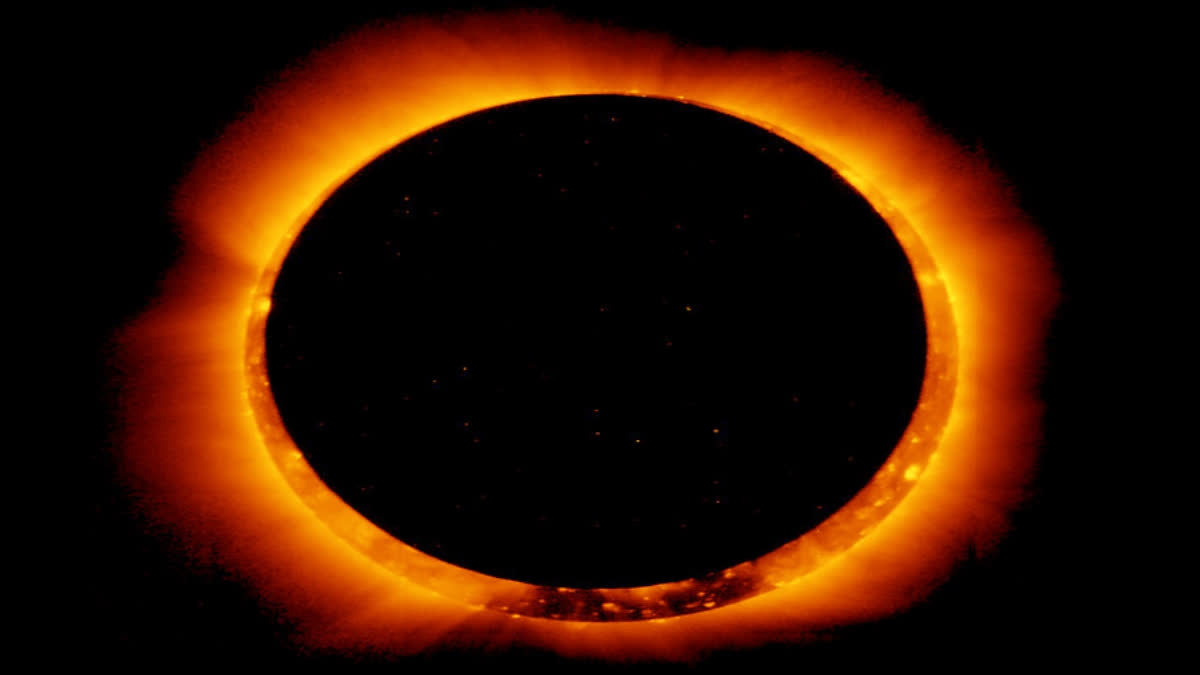Hyderabad: The world is getting ready for a celestial spectacle in 2023 as a rare 'ring of fire' solar eclipse graces the skies on October 14. However, the extraordinary celestial display will be missed by the Indian populace, whose only solace is that they can watch it online.
The much anticipated, or rather breathtaking solar eclipse will take place from 11.29 PM (IST) on October 14 and will sign off on 11.37 PM (IST). Thus, people of India will miss out the alluring sight.
The solar eclipse will unfold, positioning the moon in front of the sun, creating a brilliant ring or annulus effect. The last time such an eclipse was visible across much of the Americas was in 2012. The 'Ring of Fire' or 'Annular' solar eclipse will captivate sky watchers on Saturday, particularly in parts of the western United States.
Indians need not put their hearts down as NASA offers a solution for enthusiasts worldwide. The official NASA broadcast on YouTube, commencing at 4:30 PM (IST) on October 14, will provide a live viewing opportunity for those unable to witness the event in person.
-
Watch the solar eclipse with NASA on Saturday, Oct. 14!
— NASA (@NASA) October 7, 2023 " class="align-text-top noRightClick twitterSection" data="
We'll have live updates as the "ring of fire" crosses from Oregon to Texas, starting at 11:30am ET (1530 UTC). Send us your eclipse Qs with #AskNASA—and check out what you'll see from your town: https://t.co/aVM22VO3HR pic.twitter.com/N3iEHmjYnt
">Watch the solar eclipse with NASA on Saturday, Oct. 14!
— NASA (@NASA) October 7, 2023
We'll have live updates as the "ring of fire" crosses from Oregon to Texas, starting at 11:30am ET (1530 UTC). Send us your eclipse Qs with #AskNASA—and check out what you'll see from your town: https://t.co/aVM22VO3HR pic.twitter.com/N3iEHmjYntWatch the solar eclipse with NASA on Saturday, Oct. 14!
— NASA (@NASA) October 7, 2023
We'll have live updates as the "ring of fire" crosses from Oregon to Texas, starting at 11:30am ET (1530 UTC). Send us your eclipse Qs with #AskNASA—and check out what you'll see from your town: https://t.co/aVM22VO3HR pic.twitter.com/N3iEHmjYnt
When does annular solar eclipse occur?- A sight to behold surfaces when the Moon is positioned at its farthest point from Earth, passing between the Sun and our planet. This results in a ring of sunlight, often referred to as the 'ring of fire'. Notably, this annular solar eclipse differs from a total solar eclipse, where the moon appears as large as the sun due to its closer proximity to Earth.
Where will the sight be visible?- The annular eclipse's path will traverse from the coast of Oregon to the Texas Gulf Coast on October 14. Observers in several US states will have the opportunity to view this remarkable celestial event, including Oregon, Nevada, Utah, New Mexico, Texas, and parts of California, Idaho, Colorado, and Arizona, if the weather permits as detailed by NASA. The eclipse will then journey over Mexico, Central America, and South America before concluding at sunset in the Atlantic Ocean. The duration of the eclipse at any given point in the U.S. will average between four to five minutes.
-
On October 14, a “ring of fire” solar eclipse will appear across a swath of the western United States, as well as in parts of Central and South America. Here’s what it is and where you can experience it for yourself
— National Geographic (@NatGeo) October 3, 2023 " class="align-text-top noRightClick twitterSection" data="
https://t.co/qq9z5boi8B
">On October 14, a “ring of fire” solar eclipse will appear across a swath of the western United States, as well as in parts of Central and South America. Here’s what it is and where you can experience it for yourself
— National Geographic (@NatGeo) October 3, 2023
https://t.co/qq9z5boi8BOn October 14, a “ring of fire” solar eclipse will appear across a swath of the western United States, as well as in parts of Central and South America. Here’s what it is and where you can experience it for yourself
— National Geographic (@NatGeo) October 3, 2023
https://t.co/qq9z5boi8B
Precautions- It is never safe to look directly at the Sun during an annular solar eclipse without specialised eye protection. Protective eclipse glasses with the ISO reference number 12312-2 are essential to safeguard your eyes from potential permanent damage. Avoid using cameras, telescopes, binoculars, or optical devices to view the sun without appropriate filters, and consider using a pinhole projector as a safe alternative to witness this spectacular astronomical event.
Also read- Aditya L1 spacecraft healthy, trajectory correction manoeuvre performed: ISRO




